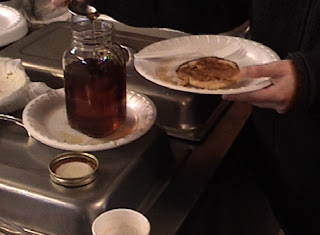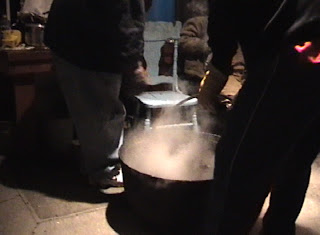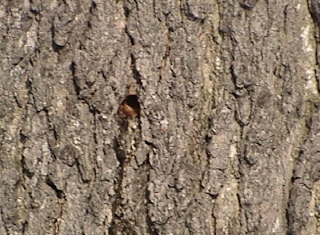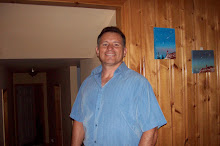Wednesday, September 26, 2012
Monday, September 10, 2012
Six Nations Education Language and Culture updates
During the lunch break staff and student were invited to view cultural and language projects that the students made. The projects were awesome, and covered a wide range of cultural, historical, native language and craft displays. Also during the lunch break, Mr. Gibson and Mrs. Miller from I.L. Thomas School, hosted a ding-ball game that had many kids enjoying themselves trying to throw and catch the double-ball. After lunch the social began, and was run entirely by the students. They did all of the announcing of the songs and dances in the Cayuga and Mohawk languages, as well, they also did all of the singing and leading of the dances. All in all it was an excellent day of celebrating our cultural heritage as Six Nations Haudenosaunee. Pictures of the event will be posted as they become available.
Recent updates affecting education at Six Nations.
Our former manager Kris Hill, has returned to her former position as Regional Manager of Education Programs for Ontario, and is no longer Acting-Superintendent. I would like to say Nyá:węh to Kris for all her hard work and dedication to the education system at Six Nations, she will be greatly missed.
Thursday, March 11, 2010
Owahda/Wahta
Monday, March 1, 2010
New Schedule
Wednesday, February 3, 2010
Reminder of Mid-Winter School Closure
Podcast
Friday, January 22, 2010
Aboriginal Language Day is March 31.
How can you promote language use in your school/community?
You can:
• Have a meeting with your Home and school to discuss the importance of revitalizing
your language. Come up with a plan of action that the school and parent community can do together.
• Form a language and literacy committee that works to promote Aboriginal language in your school. You can plan special events, make presentations to the school, health centre and band office about the importance of Aboriginal language or work with literacy programs to
include Aboriginal language activities in their program.
• Use promotional posters, signs and billboards. For example you could put up posters or signs around the community saying, “Did you speak Cayuga/Mohawk/Onondaga to your
child today?”
• Encourage your band or council to put up signs in our language in the community. Students can write letters to council encouraging this.
• Organize bingo games in your language for prizes. Elders, children, parents and youth can participate in these fun nights at your school. Ask local businesses to donate prizes.
To make change in our community people must work together. At first it may be difficult to get everyone in the community to work towards keeping our languages alive. We can start doing small things in thecommunity to help build strong language skills.
• Work with community language groups and try and organize language activities that they can do in the school.
Over time, community members will see the value of keeping our languages alive. It may be difficult to mobilize younger members of the community who do not speak their language; they may not see a practical use for it. Many youth say they are embarrassed to use their Aboriginal language because they can’t pronounce words properly or they are frustrated that they have not learned yet. Some older people may feel angry over their loss of language because of Residential schools.
In order to mobilize community members, the revival and maintenance of the language must be tied to everyday life activities.
What are some ideas to celebrate Aboriginal Languages?
1. Have students record or speak something live on the radio. For example you can have a language contest on the radio. The students say 10 words in English and the first person to translate them into Cayuga/Mohawk/Onondaga etc. wins a prize.
3. Organize a Mystery Readers on the Radio or on a school announcement during the day. Recruit volunteers to read. The first caller to identify the reader or who the reader is reading about e.g. Tom longboat, chief/chief councilor, wins a prize.
4. Have your students make up some literacy ads for your community. Have Elders, youth
or parents read them out on the radio or school announcements. Your ads can have different
messages like:
o We can teach each other our language: Read, sing and talk in Cayuga/Mohawk everyday.
o Speak your first language at home. Keep our language and culture strong.
5. Do a family tree for the different families in your class/school. It is a wonderful way to share language, culture and history with each other. Use your Aboriginal language to name the relationships of the different people. For example Akshótha is Mohawk for Grandmother.
6. Have an elder tell a story in your class/school in the language. Stories are a wonderful way of teaching and learning Aboriginal languages. They help children with memory skills, oral communication, and imagination.
7. Think about all the values and laws that are part of your tradition. Teach your students or ask Elders to tell you about the values of your culture. Write them down in your Aboriginal language and display them in the school.
8. Teach a traditional crafts or ask Elders to come and teach a craft. Ask everyone who
attends to only speak their Aboriginal language!
9. Put posters up around the school with pictures of community members doing literacy activities or make pamphlets about the importance of using your Aboriginal language. You can include Elders telling stories, families reading together, people doing traditional skills like sewing. Put slogans on the posters/pamphlets that promote community, culture, language and literacy like: (examples are Cayuga on top, Mohawk below)
• Families can read together.
Gadó:gę gaǫdadríhǫnyę ga̱hwajiyá:de’.
Khwató:ken yontaterihónien ne kahwá:tsire.
• Share your culture and your language.
Satró:wi sęh nisaihó’dę:
Sathró:ri tsi nisarihó:ten
• Start Early – read, sing and talk in ….
Ohsnówe dasáhsawęh - sadadri̱hǫ́:nyę, sadrę:nó:dę, sadwę:nǫ́dak hni’ Gayogo̱hónǫ’
Yohsnóre tasatáhsawen - sataterihónien, saterennóten tánon satewennóntak Kanien’kéha.
• It’s never too late to learn.
Tę’ hwę́dǫh trehs ná’gę: a:sadéwayę:st
Yah nonwén:ton sotsi ohná:ken asatéwayenst
• Learn something new everyday.
Sga̱hodę́:ęh sadéwayę:st ha’dewę̱hníhsrage.
Othé:nen satéwayenst thia’tewenhniserá:ke
• Speak …. at home (substitute different languages).
Sadwę:nǫ́dak Gayogo̱hónǫ’ sęh tsí:’drǫ’
Satewennóntak Kanien’kéha tsi tsí:teron
Did you speak …. today?
Asadwęnǫ́;dak gęh Gayogo̱hónǫ’ wá’ne:’ ?
Wasatewennóntakwe ken Kanien’kéha nón:wa ?
10. Have a fun game of Aboriginal language bingo over the intercom so the whole school can play together. You can create simple bingo games in your Aboriginal language. Use pictures of things that are unique to your culture and traditions. You can use clip art or draw pictures. You can also use pictures and words together. Write the words in your Aboriginal language. You can find a northern picture bingo on the NWT Literacy Council’s website at http://www.nwt.literacy.ca/famlit_res.htm
11. Make a homemade book. You can create your own Aboriginal language books that reflect your language. Homemade books are easy to make and lots of fun.
You can make this simple book in your own community with your own
language. You can use the computer to dress it up a bit or you can cut out
pictures from magazines. You can make an "I love …." Book. It is done in both English and your language. Each page is filled with different ‘I love yous.’ For example:
I love my son, I love my husband, I love my grandpa. Then print these off for
families in your school community for Valentine’s Day.
Tuesday, January 5, 2010
Nuyah! Nuyah!
Monday, November 30, 2009
Friday, November 20, 2009
Ronttókha yonkhishothó:kon/hodi'nigohowáne's okíshotso- Wisdom of our ancestors
Thursday, November 19, 2009
Tkaya'tagwe'ní:yo ne Onkwehonwehnéha. Importance of Native language

Importance of Native language. So why is it important? It is a source of identity ("after all you are what you speak."), and it gives you important cultural ways of thinking and looking at the world and your place in it (especially ceremonially). There is also a lot of research that points to language learning, benefitting other academic areas like reading and writing, math and science, as well as cognitive thinking skills. Check out more on this subject at ACTFL.
Deho’de oihwase:? Naho:ten yori:wase? What’s new?
The other site is the AMO Language commission of Ontario, which is committed to ensuring the "Revitalization, Retention, Maintenance, and Promotion of the 3 major Native language groups of Ontario. Check out the commissioners, see if you recognize anyone.

































